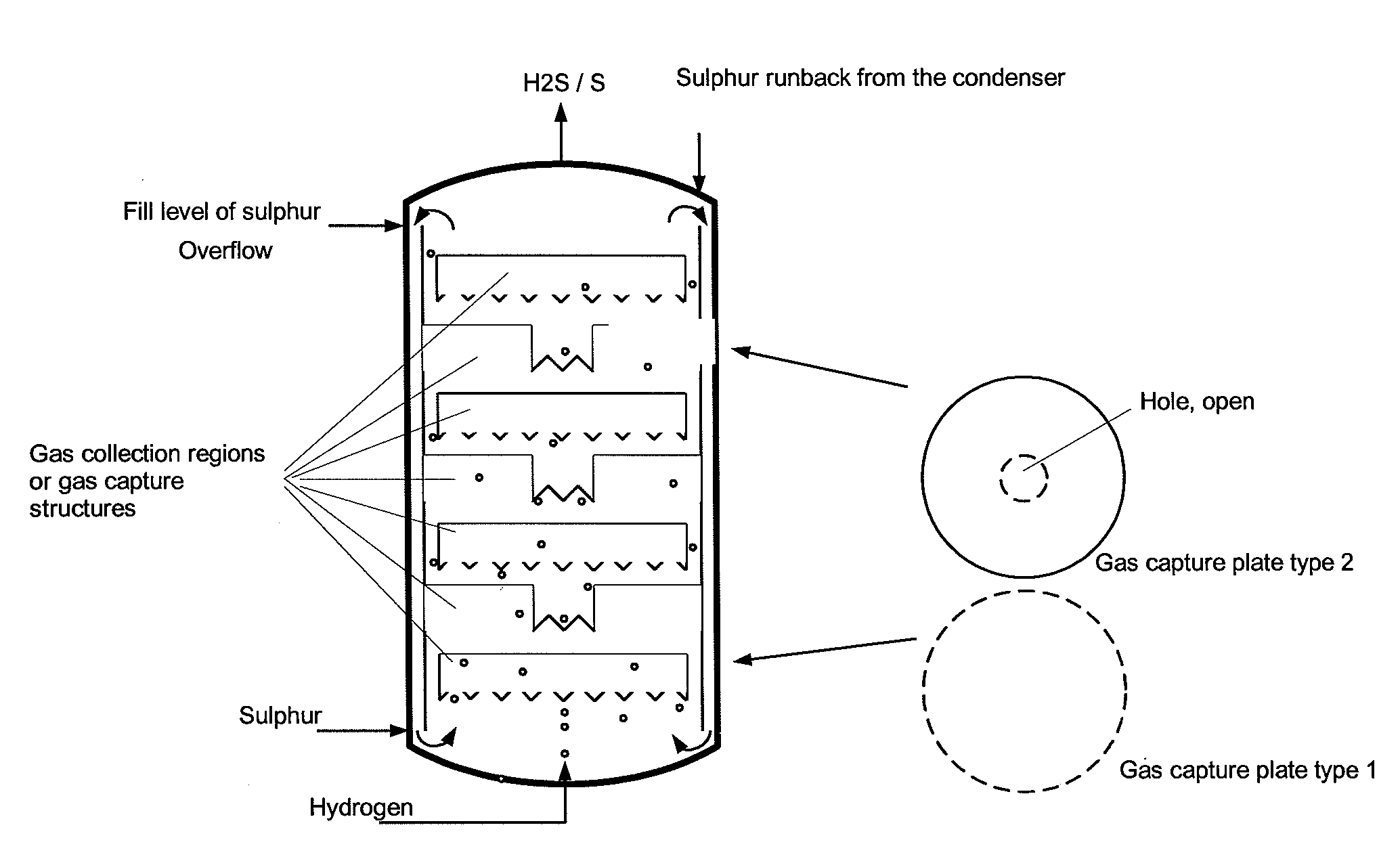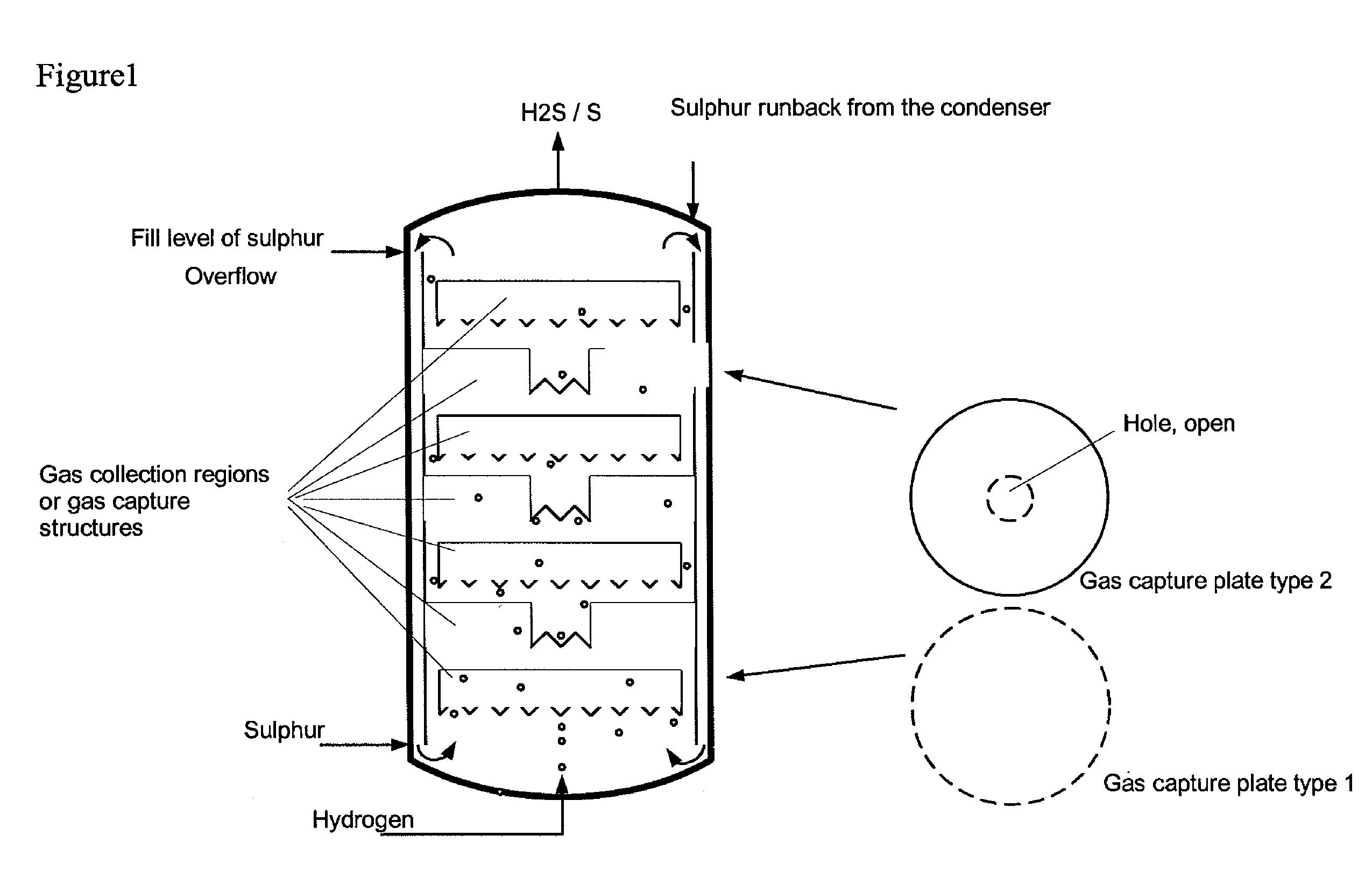Reaction vessel and process for its use
a technology of reaction vessel and reaction process, which is applied in the direction of liquid chemical process, gas-gas reaction process, liquid-gas reaction of thin-film type, etc., can solve the problems of affecting the further development of such plants, consuming energy for synthesis and treatment of starting gas mixture, and requiring apparatus and machinery
- Summary
- Abstract
- Description
- Claims
- Application Information
AI Technical Summary
Benefits of technology
Problems solved by technology
Method used
Image
Examples
example 1
[0039]Comparative example 2 was repeated with three gas collection regions in the form of upturned cups being installed in the region of the liquid sulphur. There, the ascending gas was collected with a residence time in the range of 10-50 s. The temperature measured above the liquid sulphur was the same as that in the liquid sulphur. No overheating was observed. Furthermore, no corrosion phenomena could be discerned on the steel samples above the liquid sulphur. The conversion of hydrogen in the product gas was determined by means of GC analysis and found to be >60% (at a sulphur temperature of 400° C., analogous to the comparative example), >90% at 420° C. and >96% at 440° C.
example 2
[0040]Comparative example 2 was repeated with a bed of ceramic packing elements having an external diameter of 5 mm and a gap volume of the pellets of 70% being installed in the region of the liquid sulphur. The value of the maximum temperature above the liquid sulphur was only 5° C. above the set sulphur temperature of 397° C. Furthermore, no corrosion phenomena could be discerned on the steel samples above the sulphur. The conversion of hydrogen in the product gas was determined by means of GC analysis and found to be >99%.
[0041]The examples show that, as a result of the invention, the strongly exothermic reaction is complete within the region of the internals or gas collection regions filled with liquid sulphur and does not occur in the gas region above the liquid sulphur. As a result, no corrosion due to high overtemperatures occurs there. The hydrogen sulphide formed is of high purity.
PUM
| Property | Measurement | Unit |
|---|---|---|
| residence time | aaaaa | aaaaa |
| temperature | aaaaa | aaaaa |
| temperature | aaaaa | aaaaa |
Abstract
Description
Claims
Application Information
 Login to View More
Login to View More - R&D
- Intellectual Property
- Life Sciences
- Materials
- Tech Scout
- Unparalleled Data Quality
- Higher Quality Content
- 60% Fewer Hallucinations
Browse by: Latest US Patents, China's latest patents, Technical Efficacy Thesaurus, Application Domain, Technology Topic, Popular Technical Reports.
© 2025 PatSnap. All rights reserved.Legal|Privacy policy|Modern Slavery Act Transparency Statement|Sitemap|About US| Contact US: help@patsnap.com


